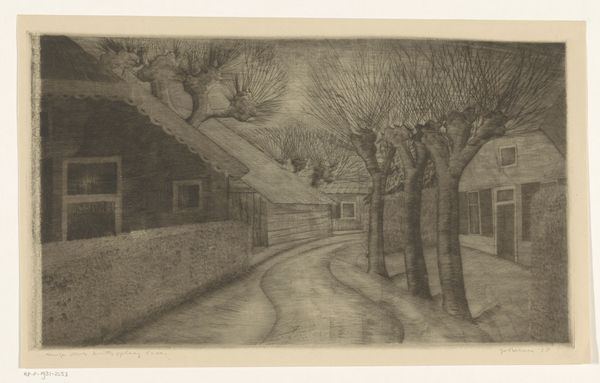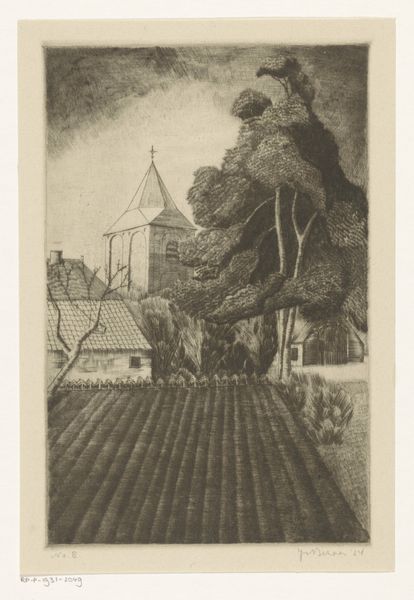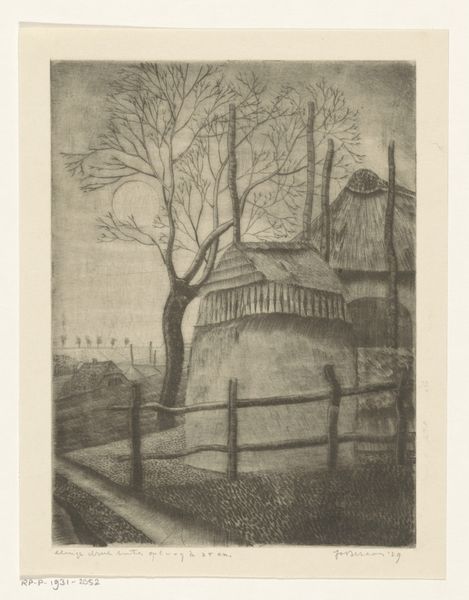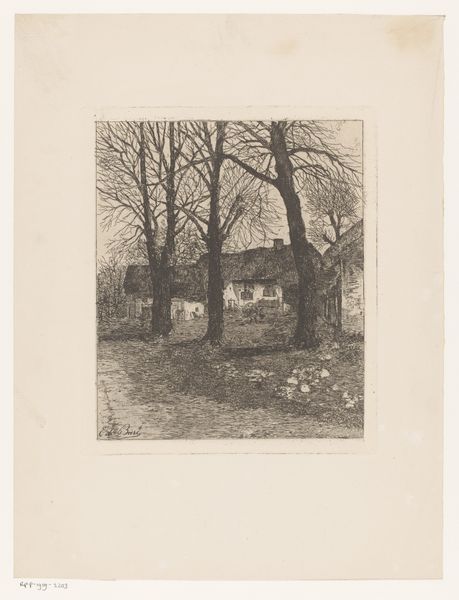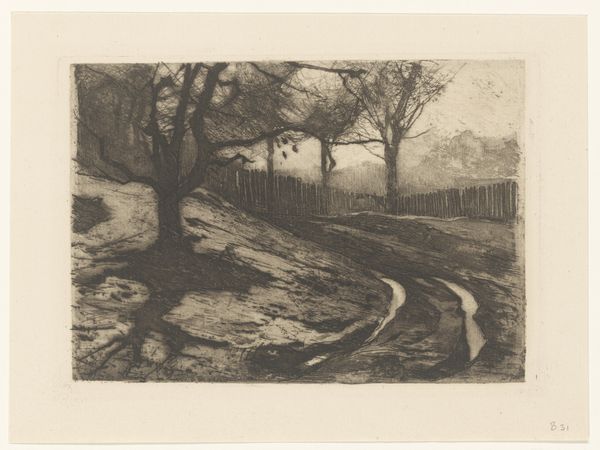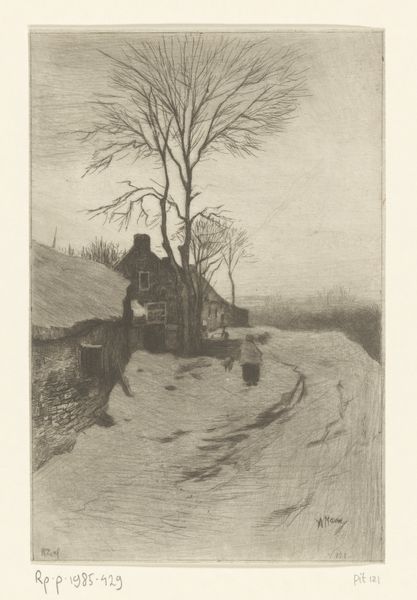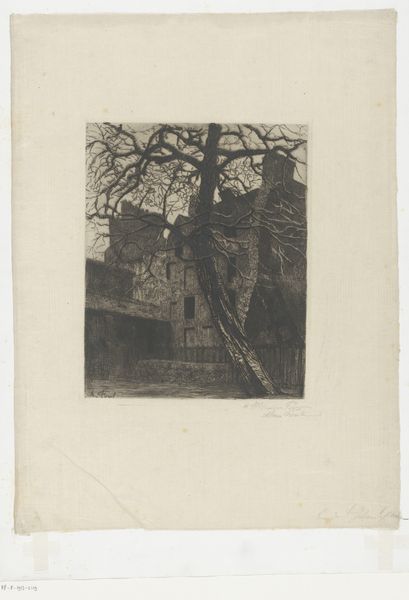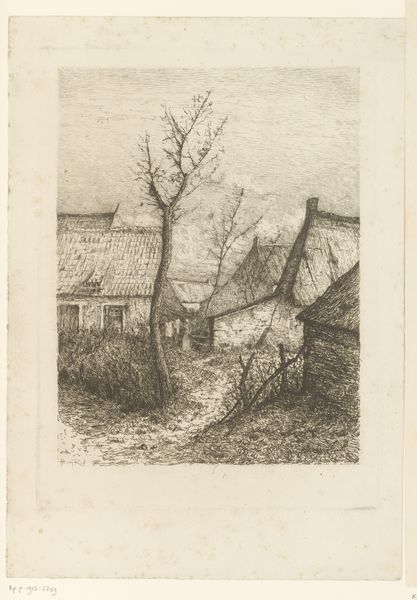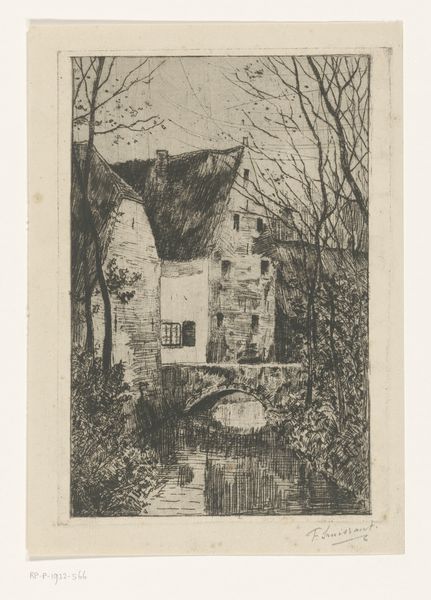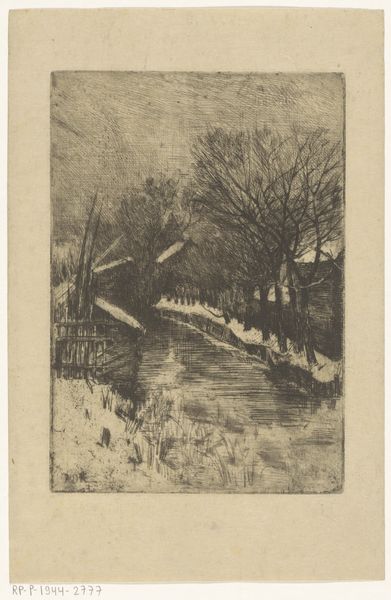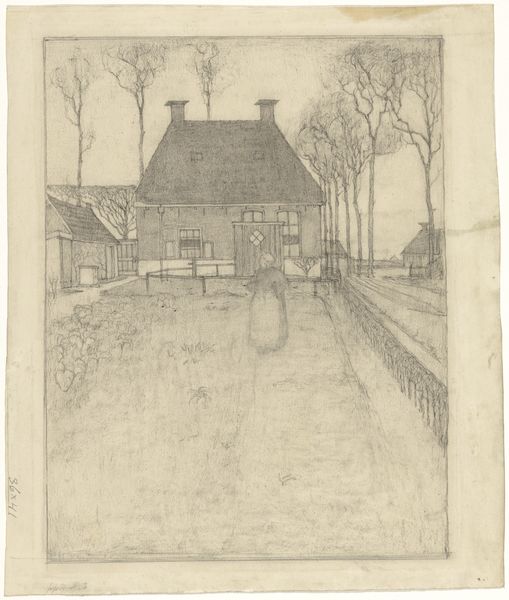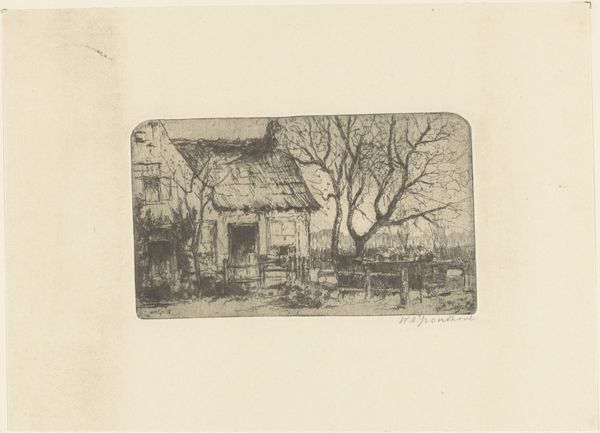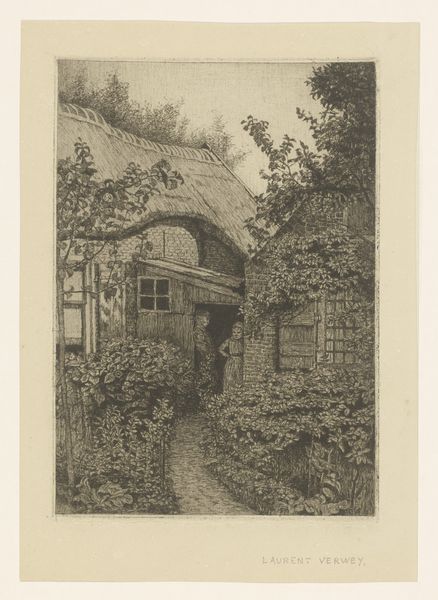
print, etching
#
dutch-golden-age
# print
#
etching
#
landscape
#
realism
Dimensions: height 195 mm, width 162 mm, height 223 mm, width 188 mm
Copyright: Rijks Museum: Open Domain
Editor: So, here we have Jo Bezaan's "Weg en boerderij" from 1928, an etching currently residing in the Rijksmuseum. It’s a landscape featuring a road leading to a farmhouse, rendered in a very detailed, almost somber way. What do you see in this piece from your perspective? Curator: Well, from a historical viewpoint, this etching speaks volumes about the romanticized yet changing image of rural life in the early 20th century. Bezaan positions us, the viewers, on the periphery, looking in, perhaps mirroring the distance growing between urban dwellers and agricultural life as the Netherlands industrialized. Does this alignment strike you? Editor: I hadn't thought of it that way, but now that you mention it, there is a definite sense of separation. The road is empty; there are no people. The farmhouse is there, but slightly obscured. It almost feels melancholic. Curator: Precisely. Consider the sociopolitical climate; there was a growing awareness of the disappearing traditional ways of life, captured, perhaps, by the Dutch Golden Age style. Also, notice how Bezaan uses the print medium itself, affordable and reproducible, democratizing art while depicting something increasingly exclusive. To whom did such imagery appeal at this moment, do you think? Editor: I guess it would have appealed to a broader audience and also those in cities maybe longing for a connection to the countryside they'd lost or never had. It makes me think about how we romanticize certain lifestyles, even now. Curator: Exactly. The "Realism" in the landscape connects with the desire for unvarnished truth, the yearning for something genuine, maybe. Ultimately, this etching reflects both an artistic style and a cultural moment. Editor: That's a completely different angle than I would have considered on my own. It gives a much deeper understanding of the artwork's impact beyond just the aesthetic. Curator: Indeed, by considering the art's relationship with its public and historical forces, it brings a rich new layer to understanding this piece.
Comments
No comments
Be the first to comment and join the conversation on the ultimate creative platform.
